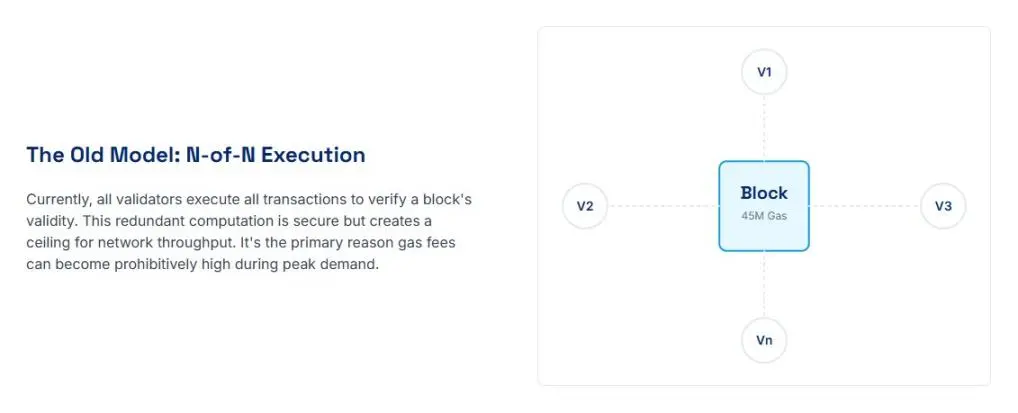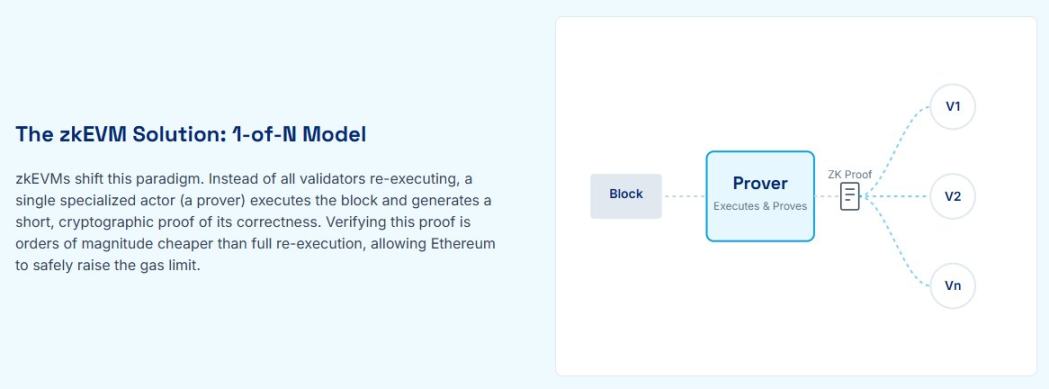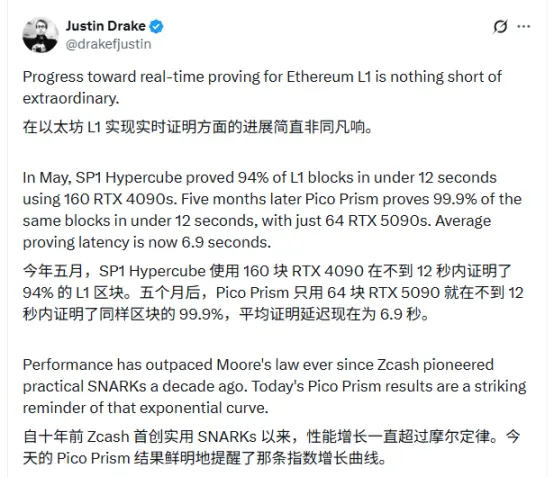Author: 0xTodd
Among the many ideas behind Ethereum's scaling, ZK is the most difficult to discuss.
Looking across the entire network, Vitalik Buterin and the Ethereum Foundation have placed the largest bets on ZK. ZK is a bit like the youngest son in the Ethereum family, receiving the most investment, but also the most uncertain future.
A few days ago, the Ethereum Foundation released the Kohaku roadmap, which outlines the various foundational components of a privacy wallet. The roadmap reiterated that further functionality will require the implementation of the ZK-EVM/ZK-VM.
So, why does Ethereum need ZK-VM so urgently?
The answer is, for performance, and not at the expense of security.
We talked about a topic before, which is that the most immediate way to improve Ethereum's performance is to increase the GAS limit, in short, to make each block larger.
However, increasing the GAS limit comes at a cost, and overly large blocks are a heavy burden on nodes.
The current verification model of Ethereum is called "full verification by all members", which means that all nodes must perform full verification on each block. This idea is simple and crude, but unfortunately it is too redundant.

Because if the GAS limit is raised too high, the workload of each node will increase significantly at the same time.
You should know that the block interval of Ethereum is 12 seconds. Time must be reserved for the global propagation of blocks, and there are also a lot of old people who have to queue up for MEV. The time for each validator to accept and verify the block is actually very short (about 4 to 8 seconds), and it is really impossible to do a lot of verification.
However, if Ethereum's L1 is fully ZK-based, it will become "one-to-one verification." When a block is assembled, it first undergoes a ZK proof.
As we all know, ZK proofs are slow to generate, but verification is extremely fast. Therefore, each block only needs to be ZK-ified once, and all nodes only need to quickly verify whether the proof is correct.

The advantage of this is that you can increase the GAS limit as much as you can, because no matter how much you increase it, the burden on the node will not be too great.
To give an analogy, in the past, when you went through a leave approval process (issuing a transaction) in DingTalk, each leader (node) needed to personally check whether you had any remaining leave (all employees had to check) and approve all of them.
After ZK, you still apply for leave (send a transaction). When the system finds that you have remaining leave, it directly tells all leaders that "this person has leave", and the leaders fully trust that the system will not make mistakes (ZK). Then the leaders' approval will be much faster (all employees check it at once).
This is why Ethereum needs to be ZK-ified.
However, this project is quite large, after all, the cryptographic content is too high, so Ethereum must cooperate with other teams.
So what kind of work do third-party teams have to do? Let’s take the Brevis protocol mentioned by Justin from the Ethereum Foundation as an example. This is also the fastest protocol currently running ZK.

Brevis is working on the ZK-VM track, and their latest Pico Prism technology is currently the fastest in producing ZK proofs under given conditions.
According to disclosures, Brevis used 64 RTX 5090 GPUs on the current Ethereum block cap of 45M GAS. During the test, 99.6% of blocks were proven within 12 seconds, and 96.8% of blocks were proven within 10 seconds.
This data is very impressive.
In order to achieve decentralization, Ethereum requires that the equipment used for ZK proofs must not exceed US$100,000.
Otherwise, if everyone had a few H200/B200s, it would definitely be faster than this, but that would be too high a barrier to entry. Graphics cards like Brevis are just around the $100,000 mark.
Also, why is 10-second coverage important?
Because generally MEV blocks are produced in 1 to 3 seconds, plus 10 seconds of proof, it takes exactly 12 seconds to fill up, which is just enough time. Therefore, 12 seconds is not enough, and the coverage rate must be very high at 10 seconds.
So Brevis is equivalent to "winning the dance championship in a dance competition with shackles on."
Brevis's most impressive technology is its breakthrough in multi-GPU clusters, but there are quite a lot of technical details there, so I'll open a separate post to discuss it later when I have time.
Finally, let’s return to the topic and summarize:
- If Ethereum wants to speed up L1, it has to increase the gas limit;
- If you want to increase the gas limit, you have to ZK it;
- To achieve elegant ZK (producing proofs in less than 10 seconds, and spending less than 100,000 US dollars on equipment), the joint efforts of the crypto community are needed.







